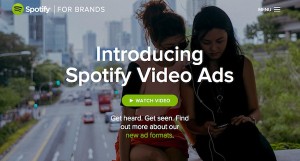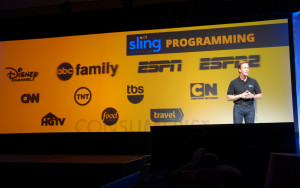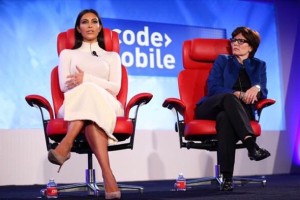This article was originally published in The Drum.
![]() With the growth of OTT TV, multiple screen viewing and cord cutting catching on in the U.S., it is unsurprising that what matters in the world of video, TV and advertisers is converging. For instance, in a recent report from June 2015, Forrester Research found that “lack of premium inventory is holding back digital video monetization.” Meanwhile eMarketer published a report about how US adults divide their TV screen time, showing that overall, video time continues to increase. While TV dipped a bit, time spent watching on connected devices more than tripled in 4 years.
With the growth of OTT TV, multiple screen viewing and cord cutting catching on in the U.S., it is unsurprising that what matters in the world of video, TV and advertisers is converging. For instance, in a recent report from June 2015, Forrester Research found that “lack of premium inventory is holding back digital video monetization.” Meanwhile eMarketer published a report about how US adults divide their TV screen time, showing that overall, video time continues to increase. While TV dipped a bit, time spent watching on connected devices more than tripled in 4 years.
So on one hand, advertisers are willing to pay 3x CPM, as their video-spending budget grows at the expense of search and display ads and on the other, viewers are craving content not just on TV, but on mobile devices.
What is the solution that can satisfy both advertisers and viewers? Cloud-DVR.
Cloud-DVR is the biggest differentiator between early OTT deployments (that mainly offer live, some VOD and limited discovery) to next-generation deployments (with advanced time-shifted TV, business model flexibility and full mobile device support). Cloud-DVR is arguably the killer-app that holds all the keys to unlocking the full potential of OTT delivery that will revolutionize our industry.
Cloud-DVR is seemingly simple – it allows end-users to record content on the cloud (instead of their set-top boxes or other hardware devices) and stream the content back on demand at any time. But Cloud DVR is anything but simple, and it has great benefits to all players in the TV consumption food chain.
Service providers can now let go of the expensive set-top boxes with their massive hard-drives, which require much investment and maintenance. Moving the storage to the cloud will allow for more storage with higher CPU for a lower price. Furthermore, service providers will be able to improve margins by offering Cloud-DVR users to pay extra for additional recording quota.
Content providers can set a new price for allowing their content to be Cloud-DVR’ed and downloaded for later viewing. In addition, with dynamic ad-insertion, VOD content can be monetized like never before.
Viewers will have the option to record an endless number of shows, watch them later on any device and also download content to view offline.
Advertisers can get access to more premium content inventory, as fresh and targeted ads can be dynamically inserted in cloud-recorded shows. Advertisers will also benefit from advanced mobile delivery that can easily ban the ability to fast-forward ads and better track engagement.
Storage Challenges are (almost) Solved
Historically, OTT vendors and operators faced challenges that impacted widespread adoption of Cloud-DVR solutions. We are now finally in a place where these hurdles are about to be overcome, including the most pressing one – storage. There are now a few approaches that help obliterate this obstacle, including having service providers record a rolling-buffer of linear channels and enable users to access their recorded shows based on queue point on that one long file. Another approach is to use a combination of core and edge storage with just-in-time transcoding, in order to reduce storage costs. In the US, where shared copies are not allowed, the leading OTT vendors experiment with storing individual copies in offline storage while streaming to users a cached (shared) copy.
Utilizing such technologies, we expect to see several tier-1 deployments offering Cloud-DVR in Europe and Asia by the Fall. Based on the potential benefits of Cloud-DVR to all aspects of the OTT food chain, 2016 will likely be an even bigger year for the industry with accelerated growth for publishers and service providers alike.



